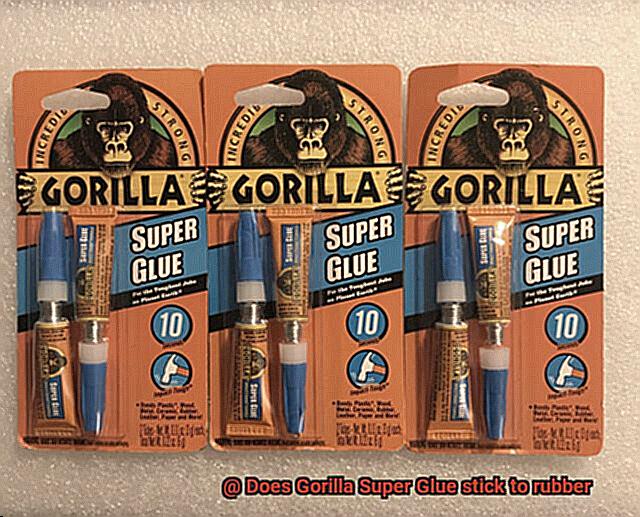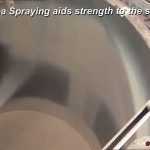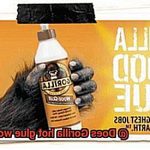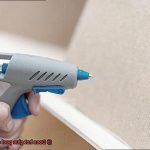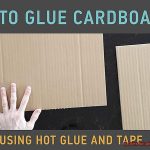Got a rubber-related predicament that needs fixing? Well, you’re in luck because today we’re about to embark on an exciting journey into the world of Gorilla Super Glue and its uncanny ability to stick to rubber.
We all know that Gorilla Glue has a reputation for being a bonding powerhouse, but does it really live up to the hype when it comes to rubber? From bouncy rubber balls to trusty rubber boots, we’re going to delve deep into the nitty-gritty of Gorilla Super Glue and its knack for adhering to this versatile material.
So, buckle up, folks, because we’re about to embark on a wild ride through the realm of Gorilla Super Glue and its magical bond with rubber.
What is Gorilla Super Glue?
Contents
- 1 What is Gorilla Super Glue?
- 2 Different Types of Rubber
- 3 Bonding Natural Rubber with Gorilla Super Glue
- 4 Bonding Neoprene Rubber with Gorilla Super Glue
- 5 Bonding Silicone Rubber with Gorilla Super Glue
- 5.1 Step 1: Surface Preparation – The Key to Success
- 5.2 Step 2: Gorilla Super Glue Application – A Thin Line Between Success and Mess
- 5.3 Step 3: Press and Hold – Forging a Solid Connection
- 5.4 Step 4: Allow Time for Curing – Patience Rewarded
- 5.5 Primers: Boost Adhesion Power
- 5.6 Testing: Small Steps for Big Success
- 5.7 Specialized Adhesives: Tailored Solutions for Optimal Bonding
- 6 Bonding Synthetic Rubbers with Gorilla Super Glue
- 7 Surface Preparation for Adhering Gorilla Super Glue to Rubber Surfaces
- 8 Applying Pressure to Ensure a Strong and Durable Connection
- 9 Conclusion
When it comes to adhesive solutions, one product stands out from the rest – Gorilla Super Glue. This versatile and robust adhesive has gained popularity for its ability to bond a wide range of materials, including rubber. In this article, we will explore what makes Gorilla Super Glue so special and why it has become the go-to adhesive for all your rubber bonding needs.
Cyanoacrylate Bonding:
Gorilla Super Glue is a type of cyanoacrylate adhesive, known for its fast-acting properties that result in quick and secure bonds. This guarantees that your rubber bonds will be strong and long-lasting.
Versatility at Its Best:
Gorilla Super Glue can bond with almost any material, making it an ideal choice for repairing rubber soles, gaskets, seals, or any other rubber item. From wood and metal to ceramics and plastics, this adhesive can handle them all.
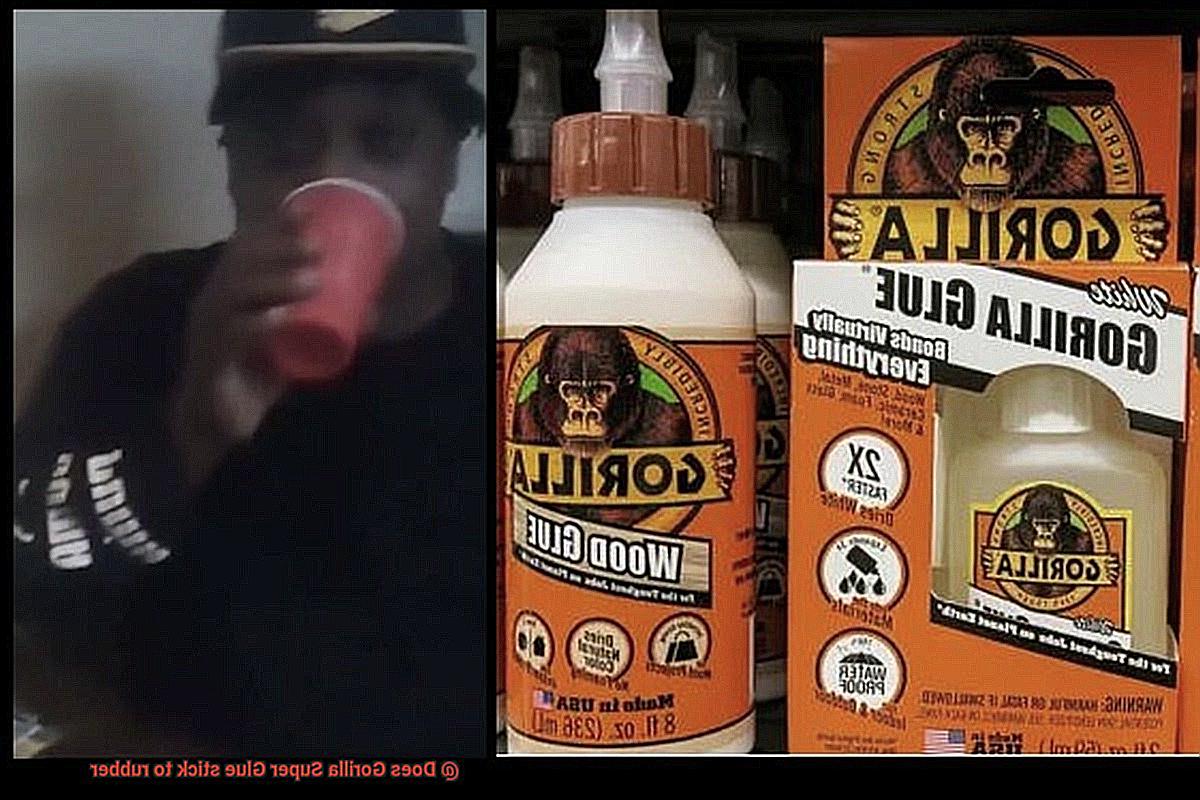
Unmatched Strength:
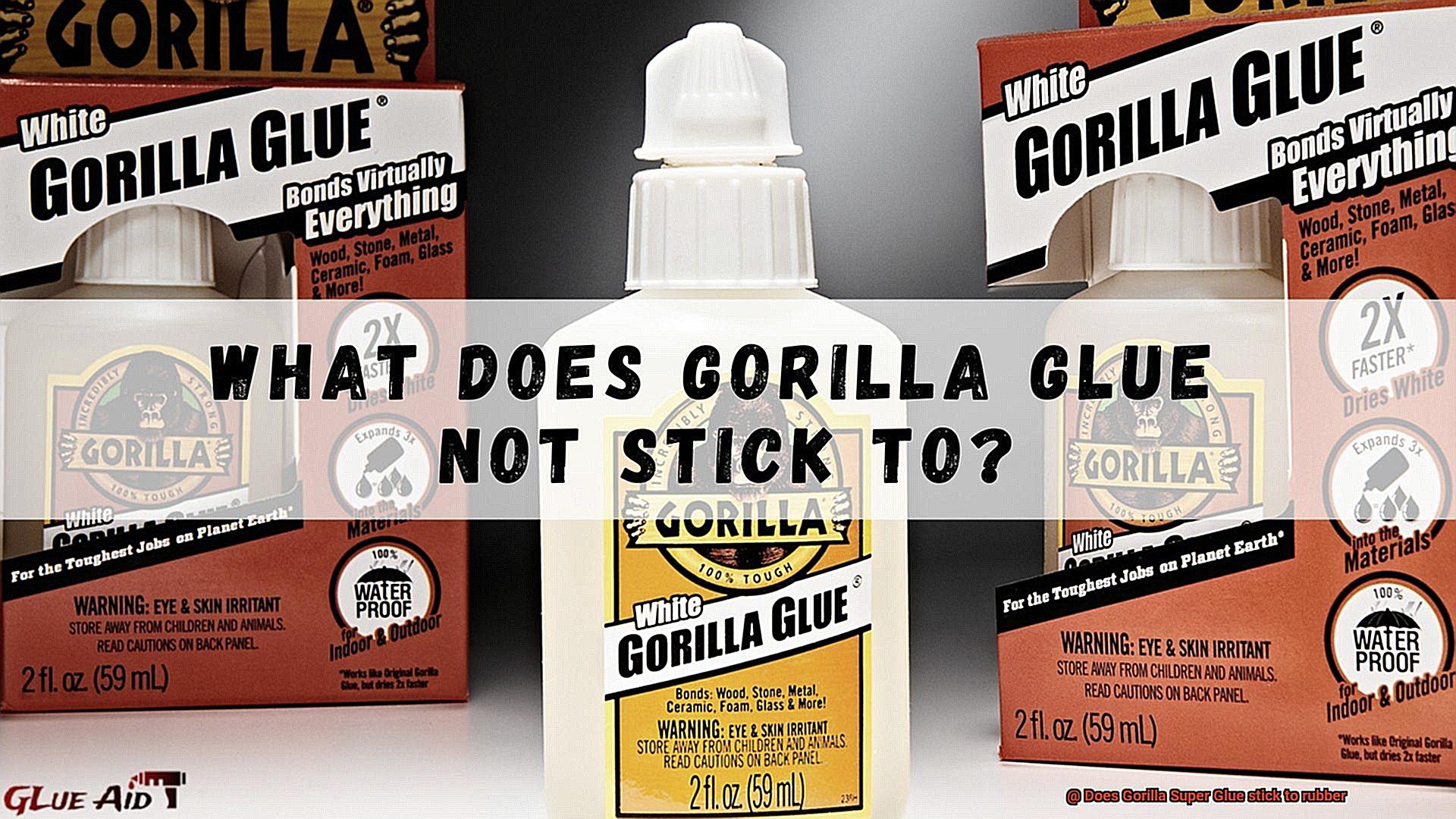
The adhesive strength of Gorilla Super Glue is exceptional. It forms bonds that resist impact, moisture, and temperature changes, making it suitable for both indoor and outdoor applications. Trust Gorilla Super Glue to provide a reliable solution for fixing leaky rubber hoses or repairing torn rubber mats.
Easy Application:
Gorilla Super Glue comes in a user-friendly bottle with a precise nozzle for controlled dispensing. It dries clear and quickly, usually within minutes, providing a seamless finish that won’t compromise the appearance of your rubber item.
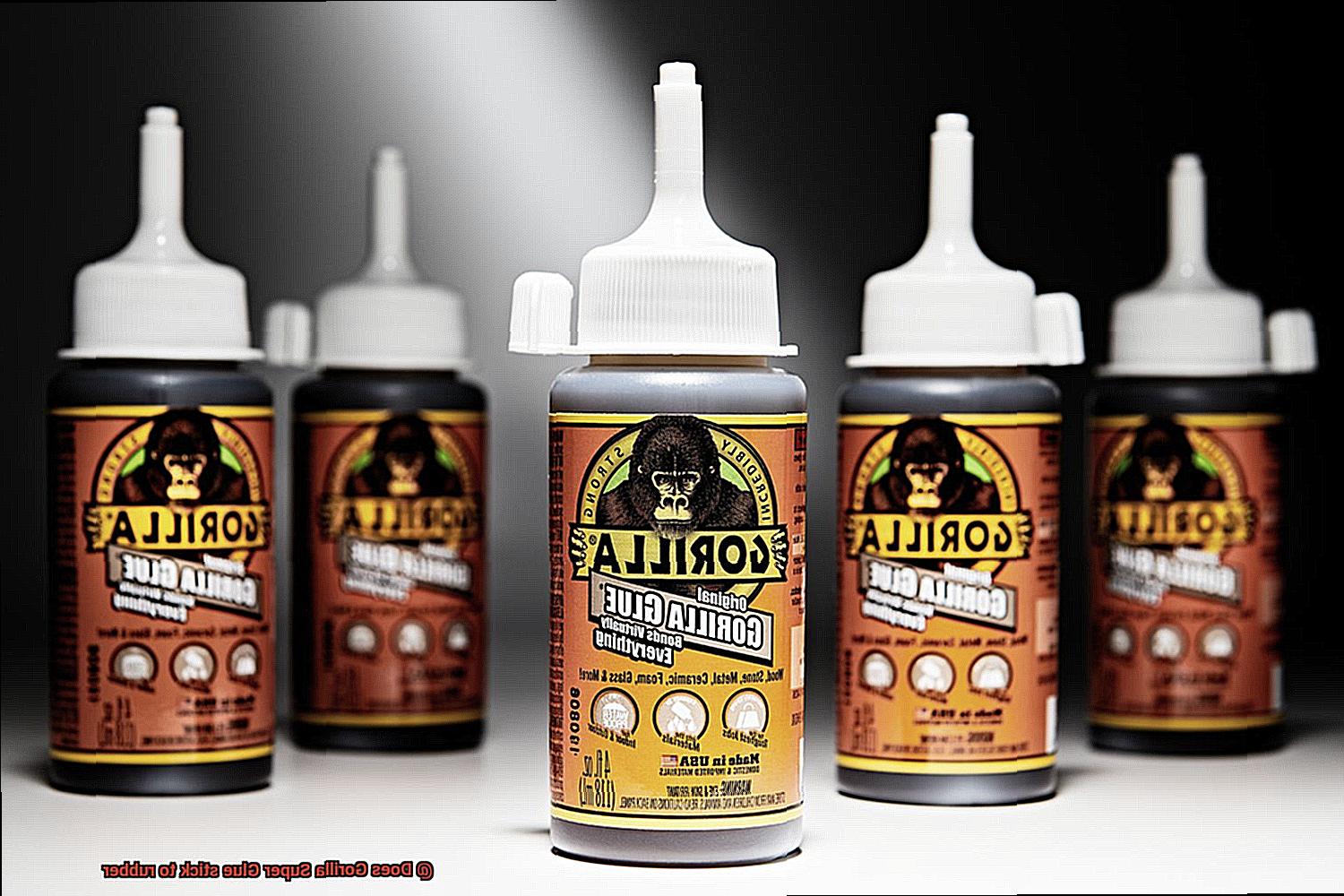
Durability Matters:
Once bonded, Gorilla Super Glue creates an unbreakable connection that can withstand heavy usage and stretching. This is particularly important when it comes to rubber, as it needs to flex and endure different pressures without compromising the bond.
Tips for Success:
Clean and Prepare:
Before applying Gorilla Super Glue to rubber surfaces, ensure they are clean, dry, and free from any dirt or oils. Lightly sanding the surface can enhance adhesion.
Test Compatibility:
While Gorilla Super Glue is generally compatible with natural rubber and neoprene rubber, it’s always a good idea to test the adhesive on a small area before proceeding with larger surfaces.
Use Sparingly:
Remember, a little goes a long way with Gorilla Super Glue. Applying too much adhesive can weaken the bond or cause excess glue to spread beyond your intended area.
Different Types of Rubber
Rubber is a fascinating material found in everyday items like tires and shoes. But when it comes to sticking rubber together, can Gorilla Super Glue get the job done? Let’s explore the world of rubber and discover which types work best with this powerful adhesive.
Natural Rubber – The Sticky Champion:
Derived from the sap of the rubber tree, natural rubber is known for its elasticity and durability. It bonds well with Gorilla Super Glue, making it perfect for all your repair needs. Just ensure you clean the surface thoroughly before applying the glue, and you’ll have a strong bond in no time.
Synthetic Rubber – The Adhesive Ally:
Synthetic rubbers, such as neoprene and nitrile, mimic natural rubber while offering enhanced resistance to chemicals and aging. When using Gorilla Super Glue with synthetic rubbers, choose the right type of glue that matches your specific material for optimal adhesion.
EPDM Rubber – A Special Case:
EPDM rubber, commonly used in automotive and roofing applications, resists heat and weathering excellently. However, Gorilla Super Glue may not provide strong adhesion to EPDM rubber due to its low surface energy. In this case, use a specialized adhesive formulated for bonding EPDM.
Butyl Rubber – Impermeable but Tricky:
Widely used in applications requiring air or gas impermeability, like tire inner tubes and gaskets, butyl rubber excels in heat and aging resistance. When bonding butyl rubber with Gorilla Super Glue, ensure clean and dry surfaces for optimal adhesion.
Silicone Rubber – Slippery Slope:
Known for high thermal stability and flexibility, silicone rubber has low surface energy, making it challenging to bond with traditional adhesives like Gorilla Super Glue. Use a specialized silicone adhesive or an adhesive specifically designed for silicone rubber bonding.
Bonding Natural Rubber with Gorilla Super Glue
Today, we’re diving into the fascinating world of bonding natural rubber with the mighty Gorilla Super Glue. If you’ve ever wondered whether this adhesive powerhouse can conquer the smooth and non-porous surface of natural rubber, you’ve come to the right place.
First, let’s talk about natural rubber. Derived from rubber trees, it’s a flexible and elastic material found in a wide array of products, from tires to gloves. But bonding it can be quite the challenge due to its slippery nature. That’s where Gorilla Super Glue comes to the rescue with its instant bonding abilities.
But before we get too excited, it’s crucial to consider which variant of Gorilla Super Glue is best suited for rubber. While the original formula is a great all-rounder, it may not create the strongest bond on smooth surfaces like natural rubber. That’s when surface preparation becomes key.
To enhance your bond, start by giving the rubber surface a thorough cleaning with soap and water, banishing any dirt or contaminants. For an even stronger hold, roughen things up with sandpaper or try using a specialized rubber primer. Trust me, these steps make all the difference.
Here’s the thing – even with meticulous prep work, achieving a superhero-like bond between Gorilla Super Glue and natural rubber might not be guaranteed. Rubber’s smooth and non-porous nature poses a challenge for most adhesives. So, I strongly suggest conducting a test bond on a small area before going all-in on a full-scale glue-fest.
In some cases, using a dedicated rubber adhesive might be your best bet. These specialized glues are formulated specifically for rubber surfaces and can provide a stronger and more durable bond. Look out for cyanoacrylate-based or epoxy-based rubber adhesives – they’re like sidekicks that pack a serious punch.
But if Gorilla Super Glue is your only option, fear not. Apply a thin and even layer on the rubber surface, press the pieces together firmly, and hold them in place for a few minutes. And here’s a pro-tip: avoid any movement or stress on the bonded area until the glue has fully cured – usually, a good 24 hours should do the trick.
Bonding Neoprene Rubber with Gorilla Super Glue
Today, we embark on an exciting journey into the world of bonding neoprene rubber with the almighty Gorilla Super Glue. Prepare to discover the secrets to achieving a secure bond that will withstand any challenge. From surface preparation to curing time, we’ll guide you through each step. And if your neoprene rubber requires a specialized touch, fear not. We’ll explore alternative adhesives too. So grab your capes and let’s dive in.
Step 1: Cleanliness is Next to Bond-iness
Before beginning this epic bonding adventure, ensure your neoprene rubber surface is squeaky clean. Dampen a clean cloth with rubbing alcohol and wipe away any dirt, dust, or oils that could jeopardize the bond. A pristine surface sets the stage for a successful union.

Step 2: Gorilla Super Glue to the Rescue
Now, it’s time to unleash the power of Gorilla Super Glue. Apply a small amount of this superhero adhesive to one of the bonding surfaces. Remember, a little goes a long way – excess glue can lead to messiness and compromise the bond’s strength.
Step 3: The Perfect Fit
Join the neoprene rubber and the other surface together, ensuring they align perfectly. Apply firm pressure for several seconds, allowing the glue to work its magic. This initial contact will lay the foundation for a mighty bond.
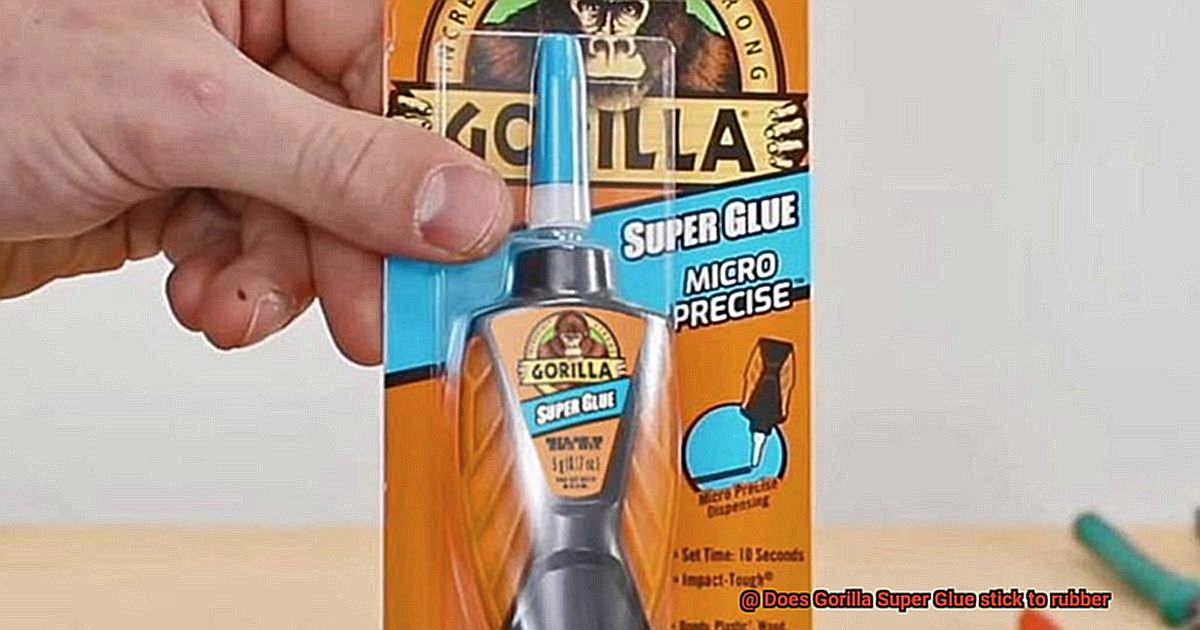
Step 4: The Power of Patience
Once bonded, exercise patience and allow time for curing. Consider clamping or applying pressure on the joined surfaces. This ensures an ironclad bond that can withstand any challenge. But remember, heroes need rest too. Leave the bond undisturbed for at least 24 hours to achieve optimal strength.
Step 5: Assess and Enhance
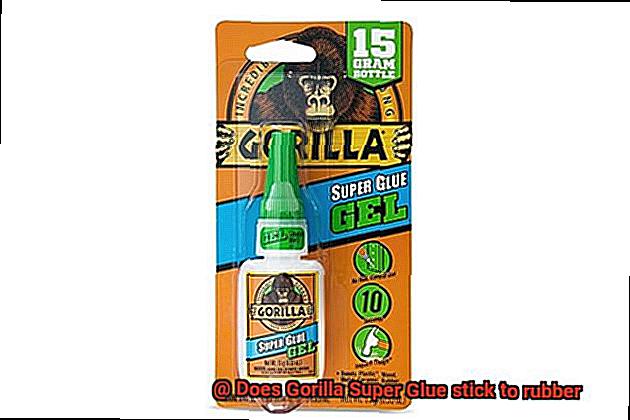
After the curing period, inspect the bond for any signs of weakness or separation. If necessary, apply additional glue and repeat the bonding process. A vigilant eye ensures a bond that can stand the test of time.
Step 6: The Quest for Specialized Adhesives
In some cases, Gorilla Super Glue may not be the perfect match for your neoprene rubber. Fear not. Specialized adhesives exist for those unique rubber variations, such as high oil content or specialized coatings. Venture forth and explore these alternatives for an even stronger and more durable hold.
Bonding Silicone Rubber with Gorilla Super Glue
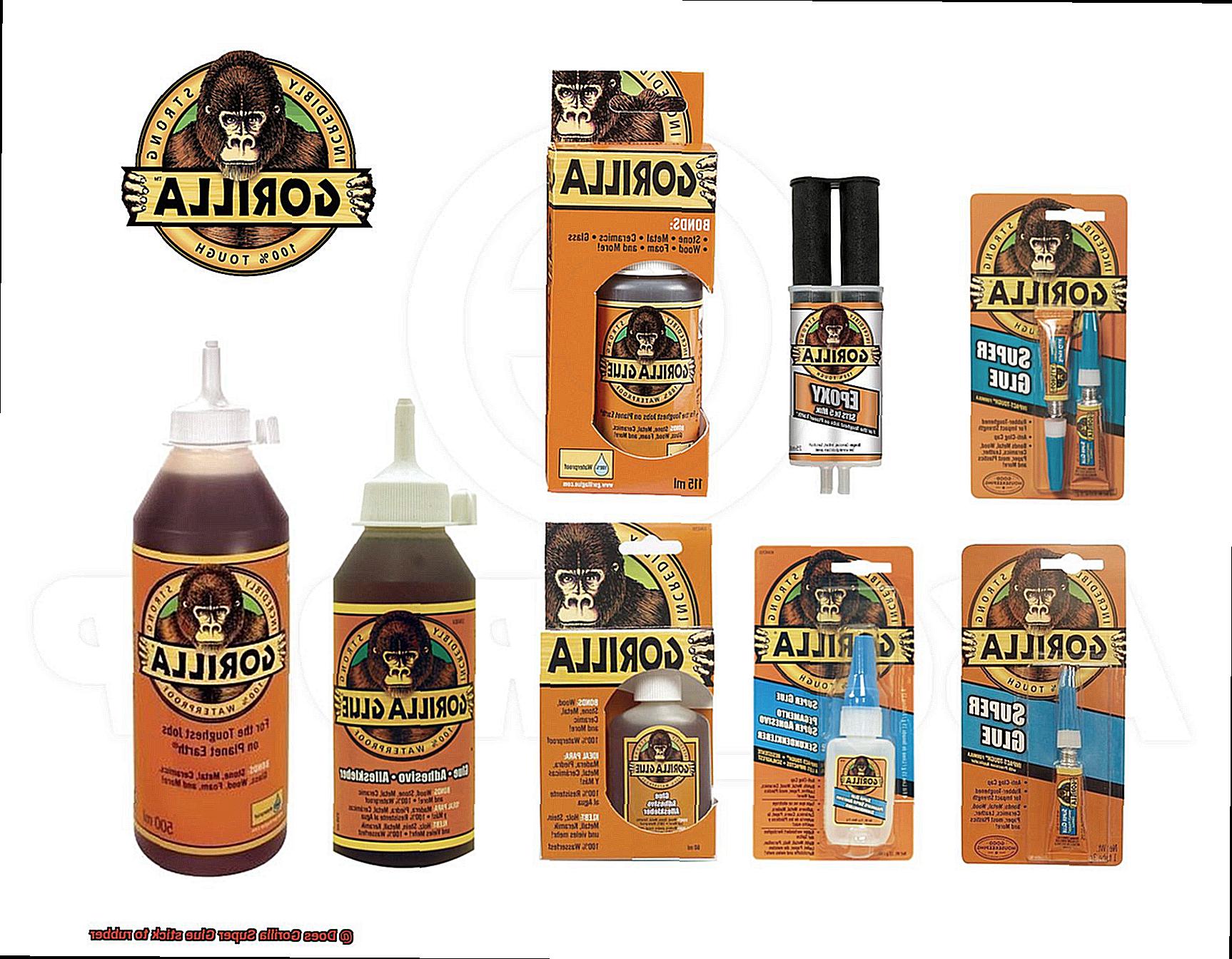
In the vast world of adhesives, few possess the versatility and reliability of Gorilla Super Glue. But can it conquer the challenge of bonding silicone rubber? In this comprehensive guide, we will demystify the process, equipping you with a step-by-step roadmap to successfully bond silicone rubber with Gorilla Super Glue. So, gather your materials and prepare for an adhesive adventure like no other.

Step 1: Surface Preparation – The Key to Success
Silicone rubber’s low surface energy presents a formidable obstacle for adhesives seeking a strong bond. Overcome this hurdle by meticulously cleaning the surface of the silicone rubber. Use isopropyl alcohol or a similar solvent to eradicate any contaminants or residue that might hinder adhesion. Remember, cleanliness is paramount.
Step 2: Gorilla Super Glue Application – A Thin Line Between Success and Mess
Once the surface is pristine and dry, apply a small amount of Gorilla Super Glue to one side of the silicone rubber. Remember, less is more. A thin layer of glue is sufficient. Excessive glue can lead to messiness and ineffective bonding.
Step 3: Press and Hold – Forging a Solid Connection
Press the two surfaces together firmly, ensuring even contact between the glue and the silicone rubber. Apply pressure for several minutes to foster adhesion and allow the glue to set properly. For added security, employ clamps or other tools to hold the bonded parts in place while the glue cures.
Step 4: Allow Time for Curing – Patience Rewarded
Curing time for Gorilla Super Glue when bonding silicone rubber may vary due to factors like temperature, humidity, and glue layer thickness. To be on the safe side, leave the bonded parts undisturbed for at least 24 hours, ensuring a thorough and robust bond.
Considerations and Tips:
Primers: Boost Adhesion Power
Priming the silicone rubber surface with a primer specifically designed for bonding can enhance the adhesion of Gorilla Super Glue. These primers create a chemical bond with the silicone rubber, elevating strength and durability.
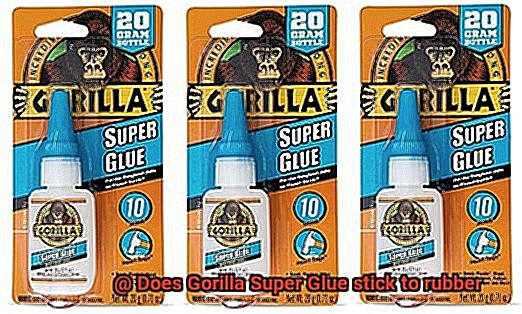
Testing: Small Steps for Big Success
Before embarking on significant bonding projects, perform a small test or consult the manufacturer’s recommendations to ensure compatibility and ascertain the desired results.
Specialized Adhesives: Tailored Solutions for Optimal Bonding
If Gorilla Super Glue falls short of expectations, specialized adhesives formulated explicitly for bonding silicone rubber are available. These alternatives often offer superior adhesion properties, tailored specifically for this remarkable material.
Bonding Synthetic Rubbers with Gorilla Super Glue
Bonding synthetic rubbers with Gorilla Super Glue requires careful consideration and proper technique to achieve a strong and durable bond. In this comprehensive guide, we will explore the process step by step, ensuring that you have all the necessary knowledge to tackle this adhesive challenge.
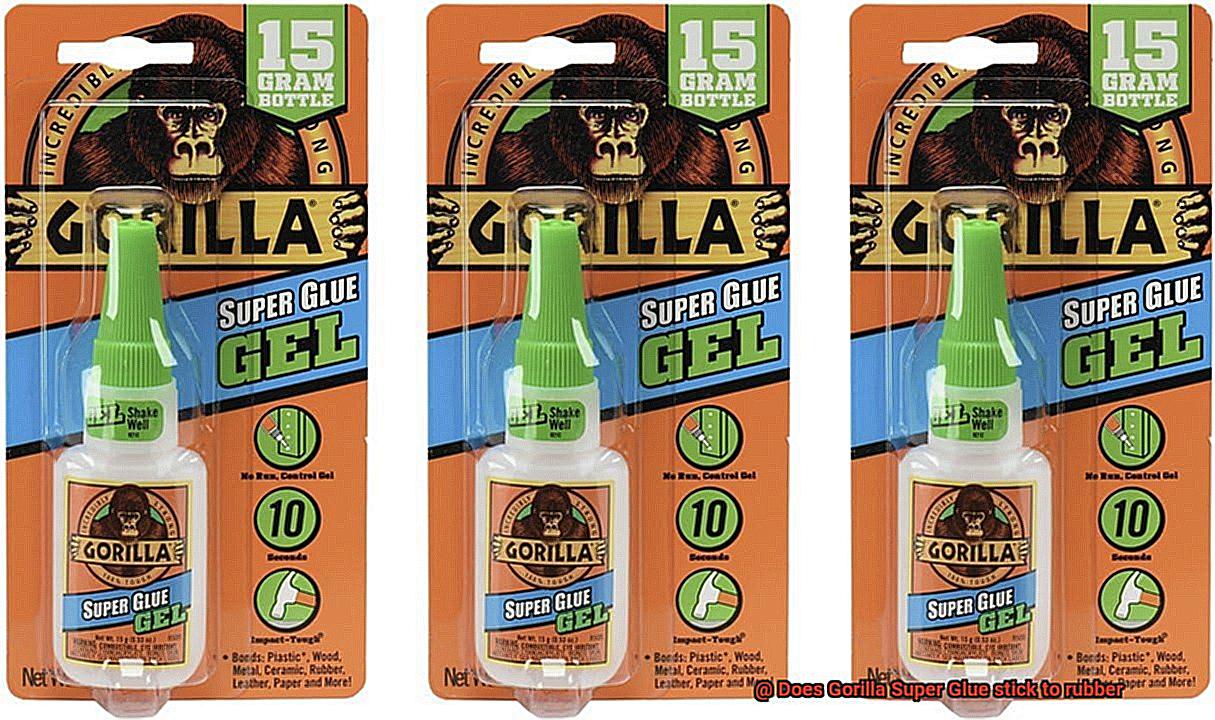
First and foremost, it’s crucial to determine the compatibility of your synthetic rubber with Gorilla Super Glue. While this adhesive is designed to bond a wide range of materials, including rubber, conducting a small test on an inconspicuous area is always recommended. Apply a small amount of Gorilla Super Glue, let it cure, and check for a robust and long-lasting bond.
Once compatibility is established, surface preparation becomes paramount. Smooth surfaces tend to bond better with Gorilla Super Glue, so if your synthetic rubber has a rough or textured surface, it’s essential to clean and prepare it beforehand. A thorough wipe-down with isopropyl alcohol or acetone will remove any dirt, grease, or contaminants that could hinder the bonding process. Ensure that the surface is completely dry before proceeding.
With your prepared rubber surface in place, it’s time for the main event – applying the glue. Remember, an even and thin layer of Gorilla Super Glue should be applied on both surfaces for optimal bonding. After applying the glue, firmly press the surfaces together and hold them in place for at least 30 seconds. This allows the glue enough time to set and creates a sturdy bond.
It is important to note that Gorilla Super Glue is not recommended for continuous water immersion or exposure to extreme heat. If your bonded rubber will face these conditions, consider using an adhesive specifically designed for such applications.
To ensure safety during the bonding process, always follow the manufacturer’s instructions and take necessary precautions when using Gorilla Super Glue. Work in a well-ventilated area, avoid contact with skin and eyes, and keep the glue out of reach of children. Remember, safety should always be a priority.
Surface Preparation for Adhering Gorilla Super Glue to Rubber Surfaces
Today, we delve into the enchanting world of Gorilla Super Glue and its extraordinary affinity for rubber surfaces. Prepare to be captivated by an adventure filled with intrigue, compatibility tests, and meticulous surface preparation. So grab your safety goggles and get ready to witness the magic unfold.
Compatibility Test:
Before embarking on this magical journey, it is crucial to ensure that Gorilla Super Glue and rubber are a match made in adhesive heaven. Conduct a small test in an inconspicuous area to confirm their compatibility. Trust me, forcing a bond that isn’t meant to be is simply not worth it.
Cleaning the Rubber Surface:
Now that we have confirmed the perfect match, it’s time to clean the rubber surface. Take a clean cloth or a trusty paper towel and wipe away any loose debris. We must eliminate any impurities that could hinder this epic bond.
Gentle Scrubbing:
Prepare a mild detergent or soap mixed with water and give the rubber surface a gentle scrub. Remember, excessive use of harsh chemicals or abrasive cleaners can harm our beloved rubber. Let’s treat it with the care and respect it deserves.
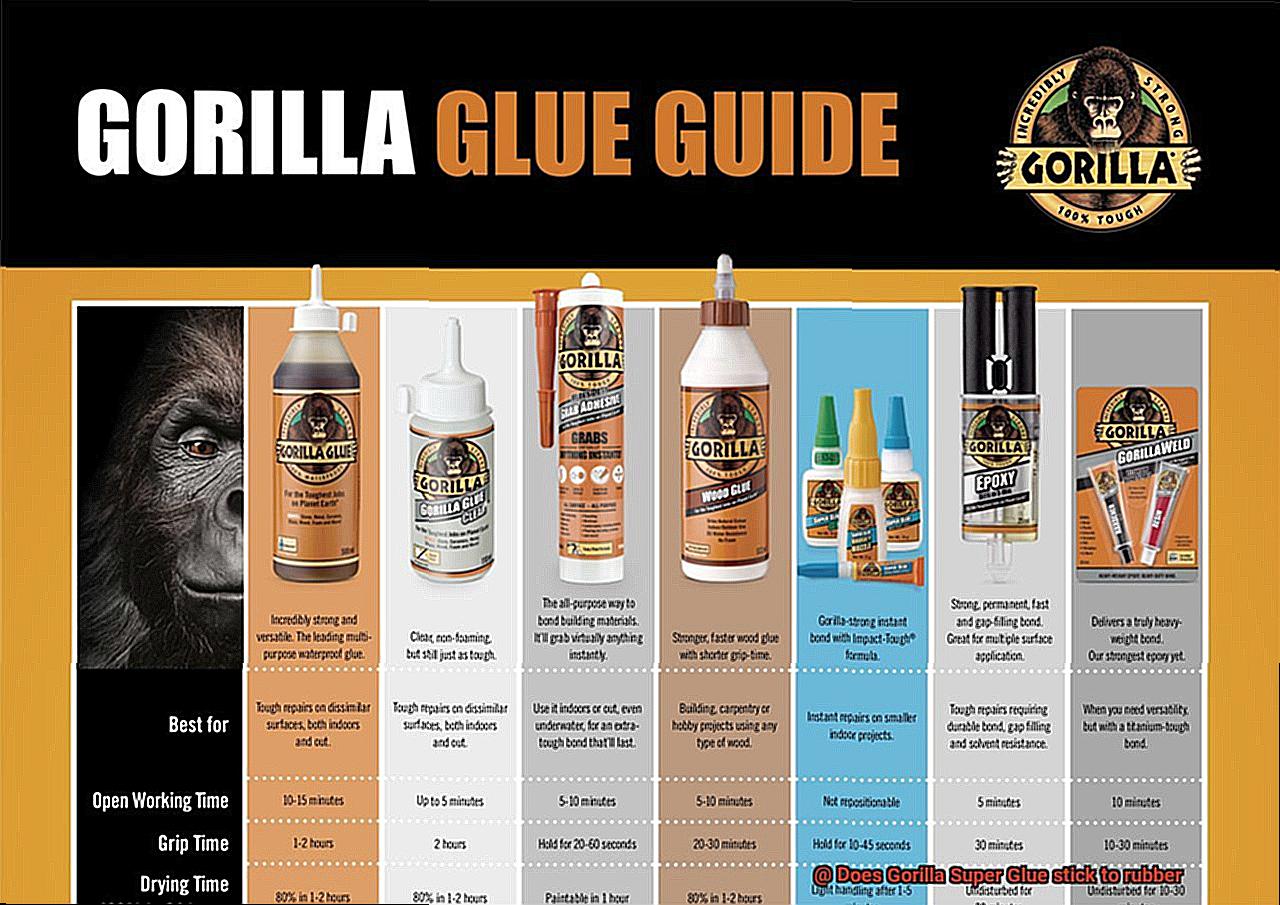
Rinse and Dry:
After the scrubbing session, rinse the surface with clean water to remove any remnants of soap or detergent. Pat dry with a clean cloth or allow the surface to air dry completely, letting nature work its magic.
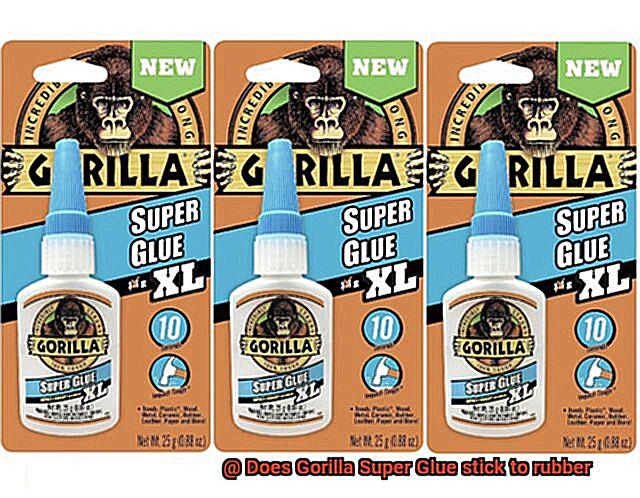
Sanding: Creating Texture for an Unbreakable Bond
To elevate this bond to new heights, grab some fine-grit sandpaper and give the rubber surface a gentle sanding. This creates a rougher texture that Gorilla Super Glue adores. Remember to sand evenly across the entire surface with precision like a ninja.
Removing Sanding Dust:
Now that we’ve added some roughness to the equation, it’s time to clean up the aftermath. Use a tack cloth or a lint-free cloth slightly dampened with rubbing alcohol to wipe away any sanding dust. We want nothing obstructing this legendary bond.
The Power of Primer:
For those seeking ultimate bond strength and durability, consider using a primer specifically designed for rubber surfaces. This magical elixir acts as a bonding agent, enhancing the overall strength of the bond. Follow the manufacturer’s instructions for proper application, and witness the transformation unfold.
Applying Pressure to Ensure a Strong and Durable Connection
Applying pressure is a crucial step in creating a strong and durable connection when using Gorilla Super Glue on rubber surfaces. This process activates the adhesive properties of the glue, allowing it to bond effectively with the rubber material. Without the right amount of pressure, the bond may not be as secure, leading to potential issues in the future.
To achieve the perfect bond, it is important to consider the amount of pressure to be exerted. Too much pressure can cause the glue to squeeze out from between the surfaces, resulting in a messy application and a weakened bond. On the other hand, insufficient pressure may not allow the glue to spread evenly, leading to weak spots in the connection. Finding the balance is key.
Using clamps or other tools that evenly distribute force across the glued surfaces is recommended. This ensures that every part of the rubber is in contact with the glue, promoting a strong and resilient bond. Additionally, clamps help maintain alignment while the adhesive sets, preventing any misalignment that could weaken the connection.
If clamps are not available, manual pressure can be applied by using your hands or a heavy object to press down on the glued surfaces. Consistent and even pressure should be exerted across the entire area to avoid weak spots.
Maintaining pressure is also important. While Gorilla Super Glue sets within seconds, maintaining pressure for at least a few minutes allows for sufficient time for the adhesive to cure and create a robust bond with the rubber material.
bG60VfP5Z84″ >
Also Read: Will Gorilla Glue damage rubber?
Conclusion
In conclusion, Gorilla Super Glue is indeed a reliable adhesive for rubber materials.
Its strong bond ensures that even the toughest rubber surfaces stay firmly in place. Whether you’re repairing a shoe sole or creating a DIY project, Gorilla Super Glue will not disappoint.
So, next time you need to glue rubber together, remember that Gorilla Super Glue is up to the task.

